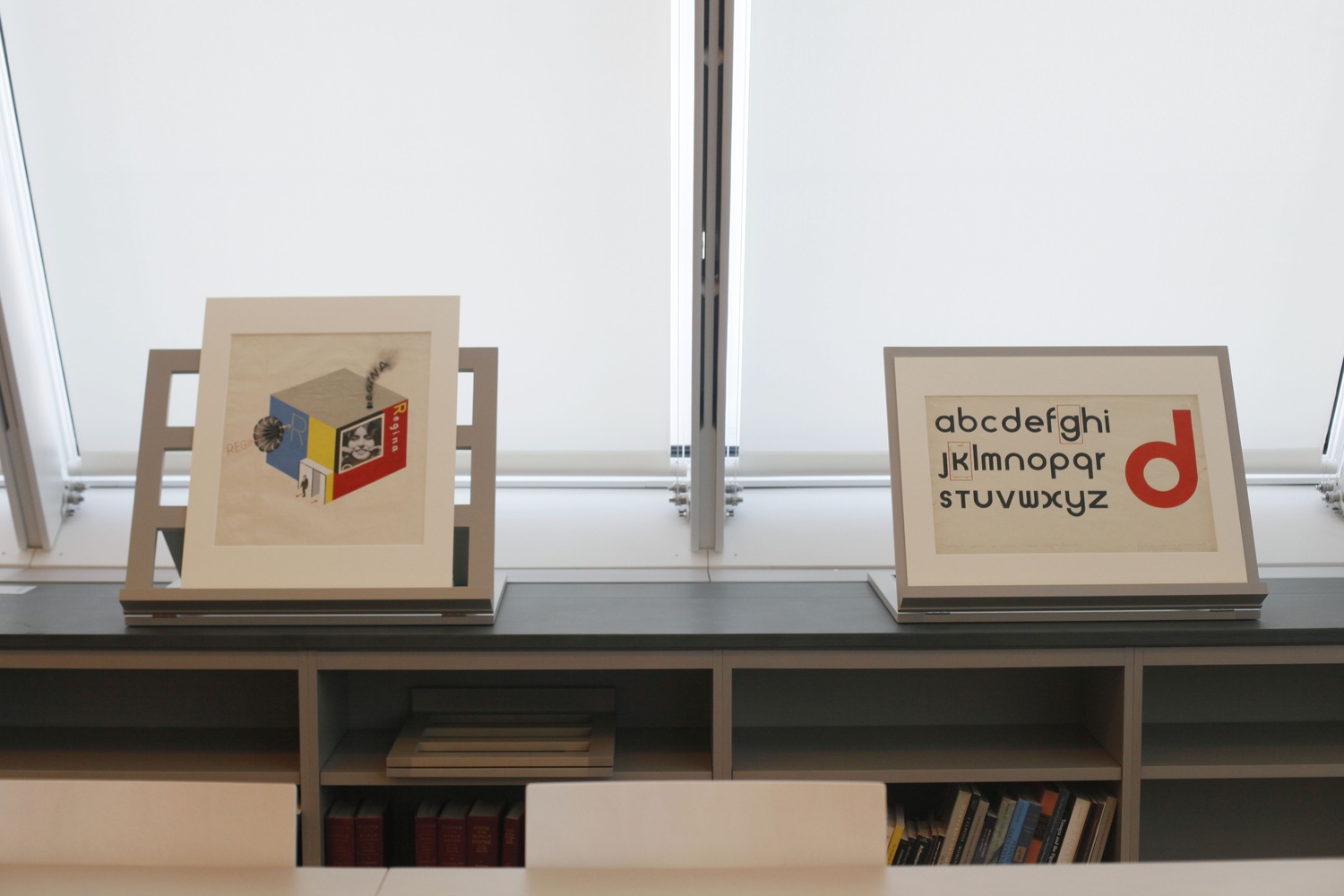
News
Pro-Palestine Encampment Represents First Major Test for Harvard President Alan Garber

News
Israeli PM Benjamin Netanyahu Condemns Antisemitism at U.S. Colleges Amid Encampment at Harvard

News
‘A Joke’: Nikole Hannah-Jones Says Harvard Should Spend More on Legacy of Slavery Initiative

News
Massachusetts ACLU Demands Harvard Reinstate PSC in Letter

News
LIVE UPDATES: Pro-Palestine Protesters Begin Encampment in Harvard Yard
Bringing the Collections to Life at the Art Study Center

No one could notice the pencil tracings under Paul Klee’s vibrant watercolor, “Newly Built Pyramid With the Eye of the Moon,” from afar. The 1919 work, no larger than six inches by eight, features both bright and muted colors, both geometric shapes and cryptic symbols. Yet underneath this dynamic surface are lines in pencil, suggesting the specter of a painting that never found itself on the paper. Even with the luxury of time that a museum setting offers the viewer, no one would see these almost imperceptible tracings, given the glass pane and the social decorum that usually require one to stand away from a piece. However, the Art Study Center, located on the fourth floor of the Harvard Art Museums, allows any Harvard student do exactly that: explore art without the barriers of a museum.
Robert Wiesenberger, Stefan Engelhorn Curatorial Fellow in the Busch-Reisinger Museum and part of the staff of the Art Study Center, selected the Klee work as one of his personal favorites from the collection. The watercolor, a 2015 acquisition, has not yet been on view in the museum galleries. “Klee is extremely inventive and variable with the media he’s using. He used every permutation possible over the course of his career,” Wiesenberger says. “It’s more than just subject matter—he’s using medium in a really interesting way. It’s wash, on paper, with pencil, but mounted to canvas, with other elements inside.” When the viewer is standing away or when the work behind glass, the elements that give this Klee drawing such vitality are more difficult to discern.
The Art Study Center’s resources extend far beyond the Paul Klee work. Approximately 132,000 works of the roughly quarter of a million total works in the Harvard Art Museums collections are works on paper. These works are more fragile and light-sensitive than easel paintings or sculptures and are therefore less often on display in the galleries. Most drawings, Klee’s included, suffer from light damage after only three months of exposure. But according to Wiesenberger, many of these pieces benefit from close, in-person examination. “In the Art Study Center, you can take a magnifying glass. You can inspect it,” he says. “You can see the reverse, see if there are any markings, or inspect the kind of paper, and [see] all of these subtleties, the different kinds of layering, the transparencies, the different kind of media they’re using.”
Klee was one of many artists, including Wassily Kandinsky and Herbert Bayer, who taught at the Bauhaus, a German avant-garde art, architecture, and design school founded in 1919 and suppressed by the Nazis in 1933. Wiesenberger said that the Bauhaus works in particular become both more meaningful and more complex with close attention to their material qualities. In one of Bayer’s works in the collection, the artist painted on canvas the letters for a typeset called “Bayer Universal” that he designed while at the Bauhaus. At the center of each letter is an almost imperceptible hole in the paper—the light mark of a compass. The way that each piece was formulated, the artist’s process, becomes a living component of an interpretation of the work. In a second Bayer piece, a mixed media depiction of a fictional multimedia headquarters, two long crease marks run down the center-left side of the paper. Was this intentional? Is it a product of a mishandling of the art? No one seems to know for certain.
The Harvard Art Museums hold the largest collection of Bauhaus works on paper outside of Germany, but their collection ranges far beyond the Bauhaus in terms of time period, place, and medium. “This is just a sample of the works at the Art Study Center. There are photographs; there are framed works, matted works,” says Mary Lister, Manager of Art Study Centers at the Harvard Art Museums. “There’s a wide range of materials—even textiles and ceramics.”
Want to keep up with breaking news? Subscribe to our email newsletter.
